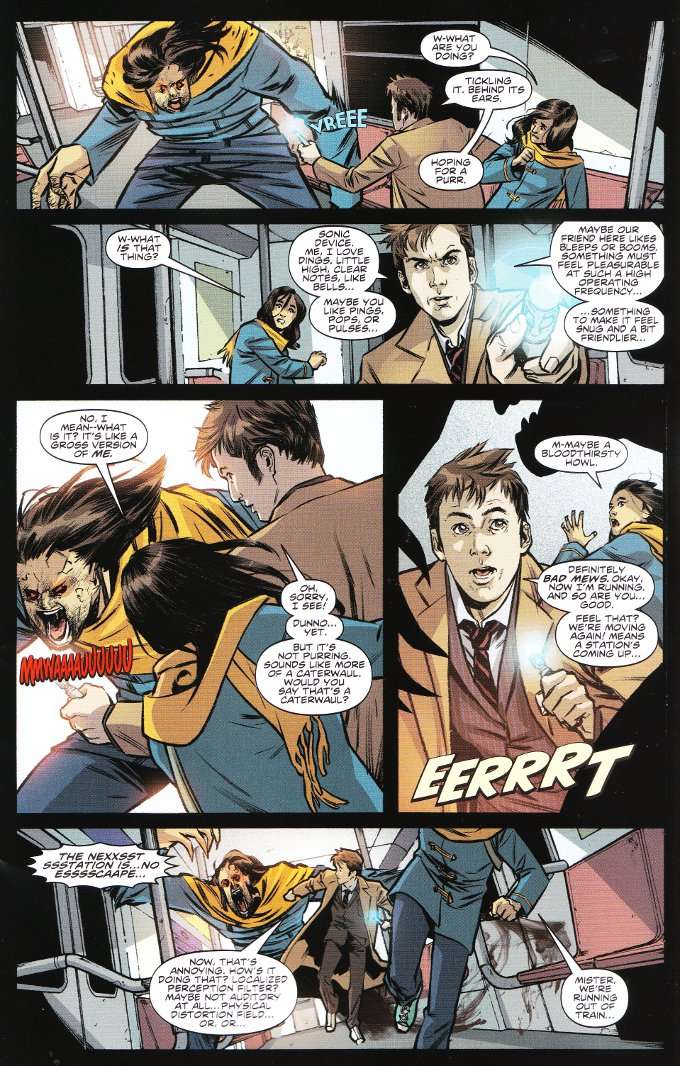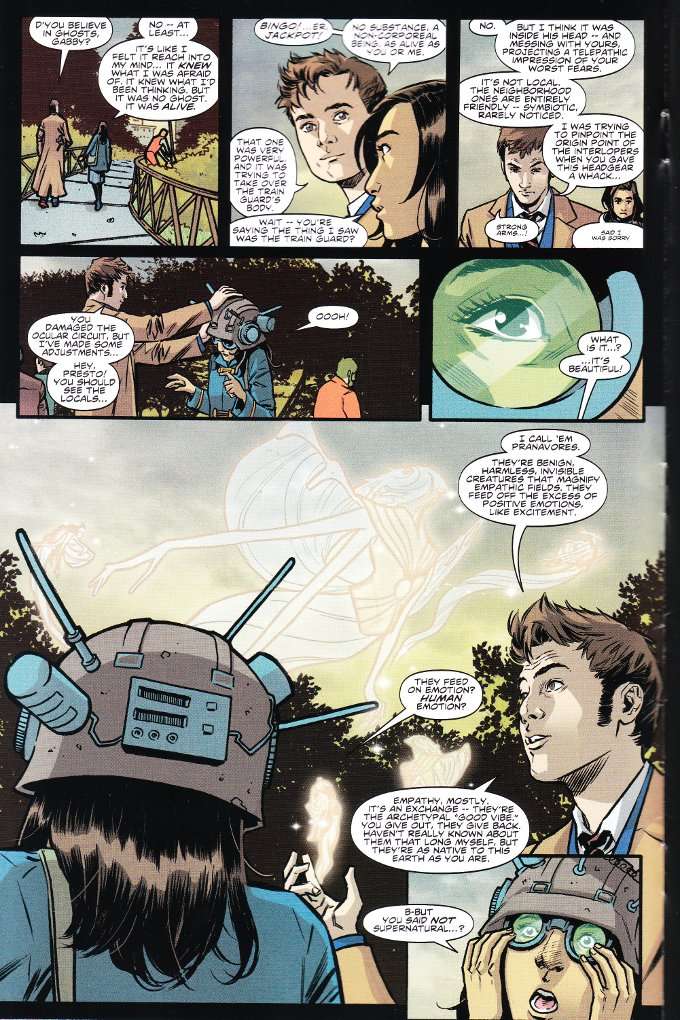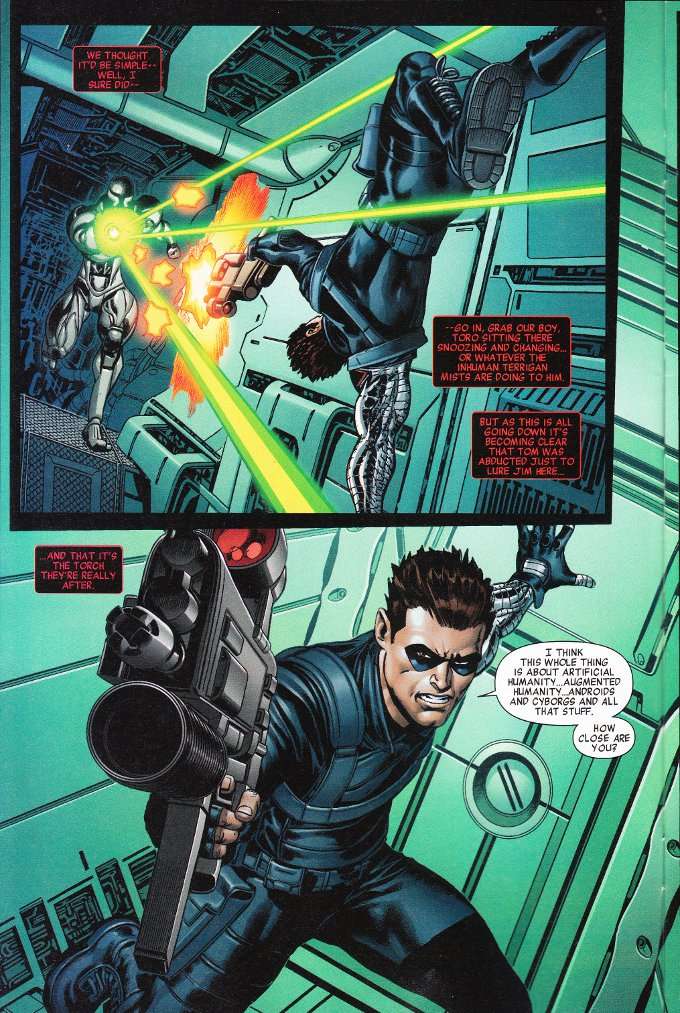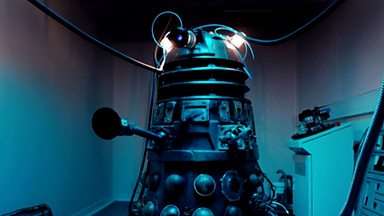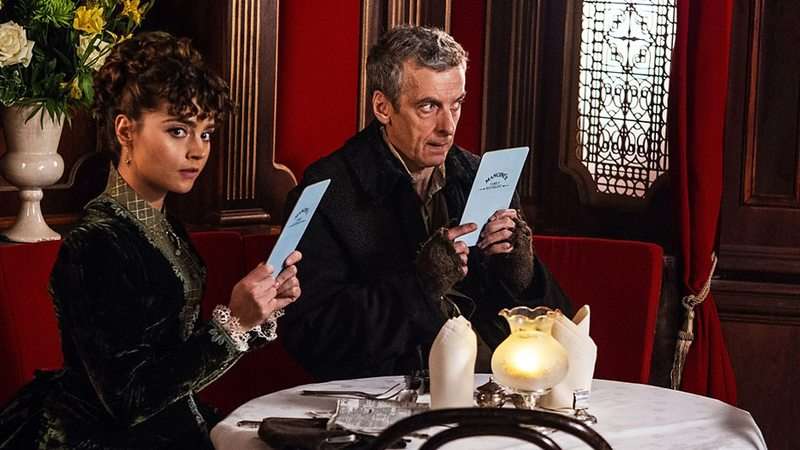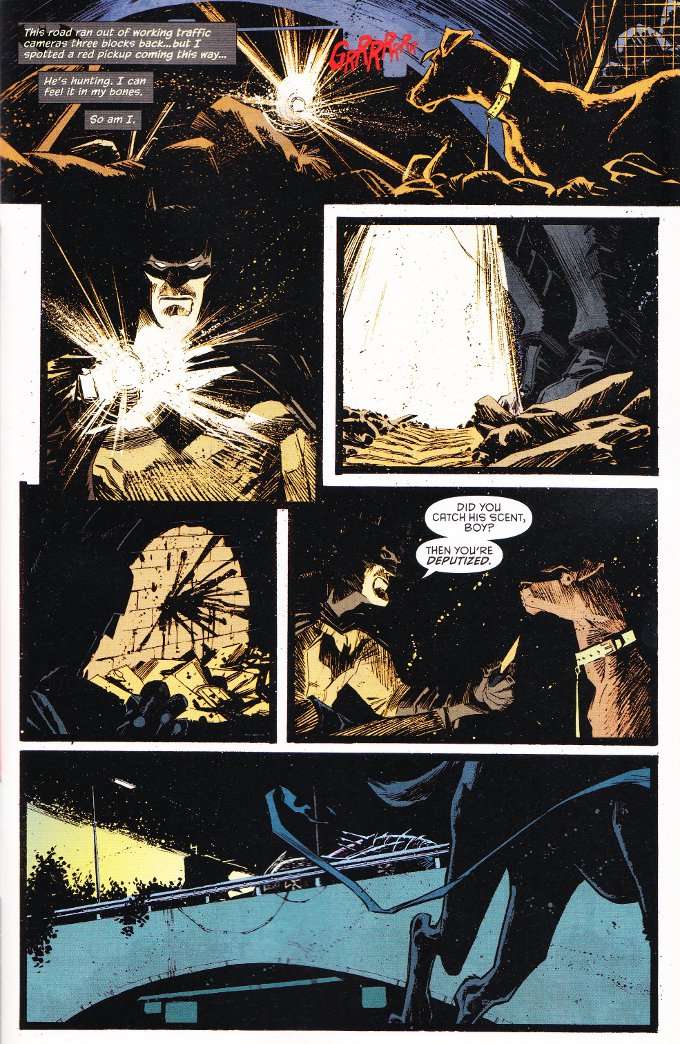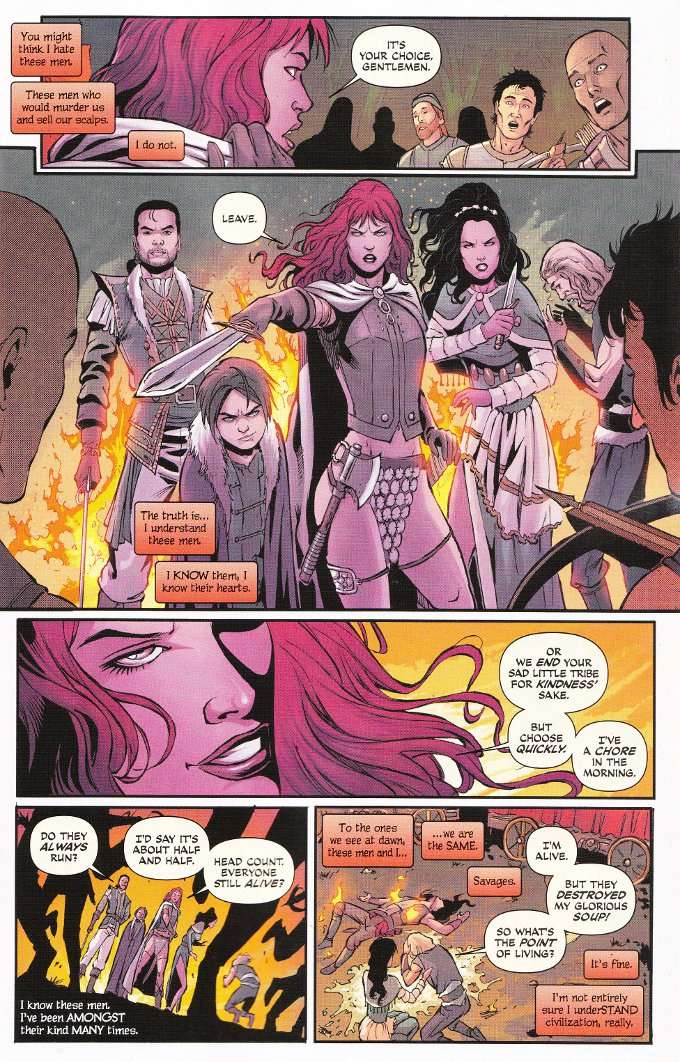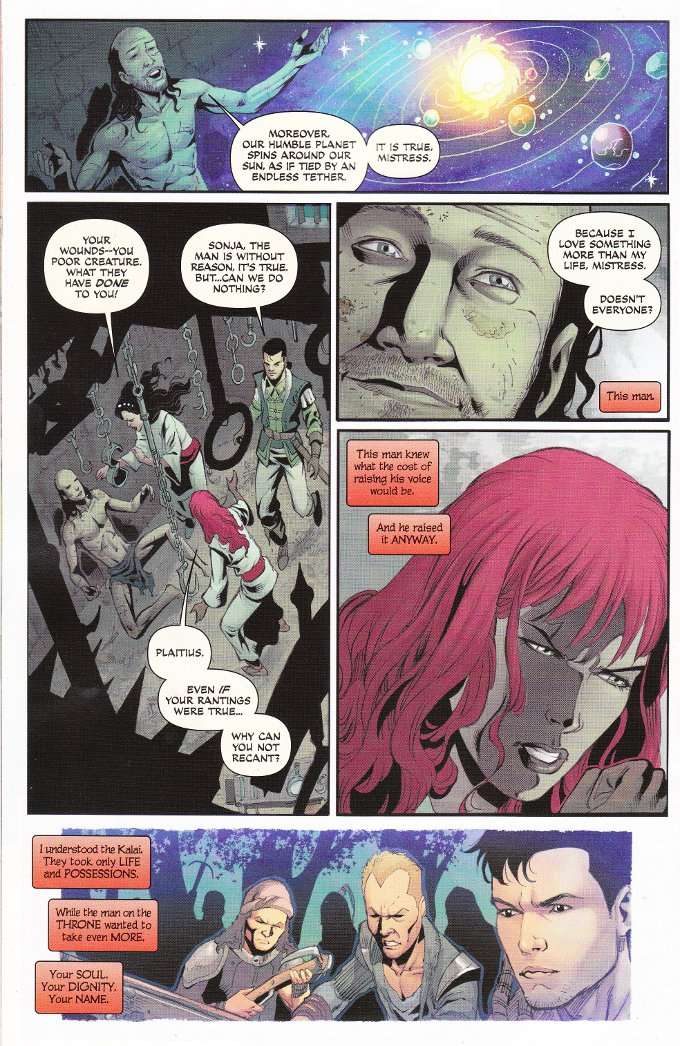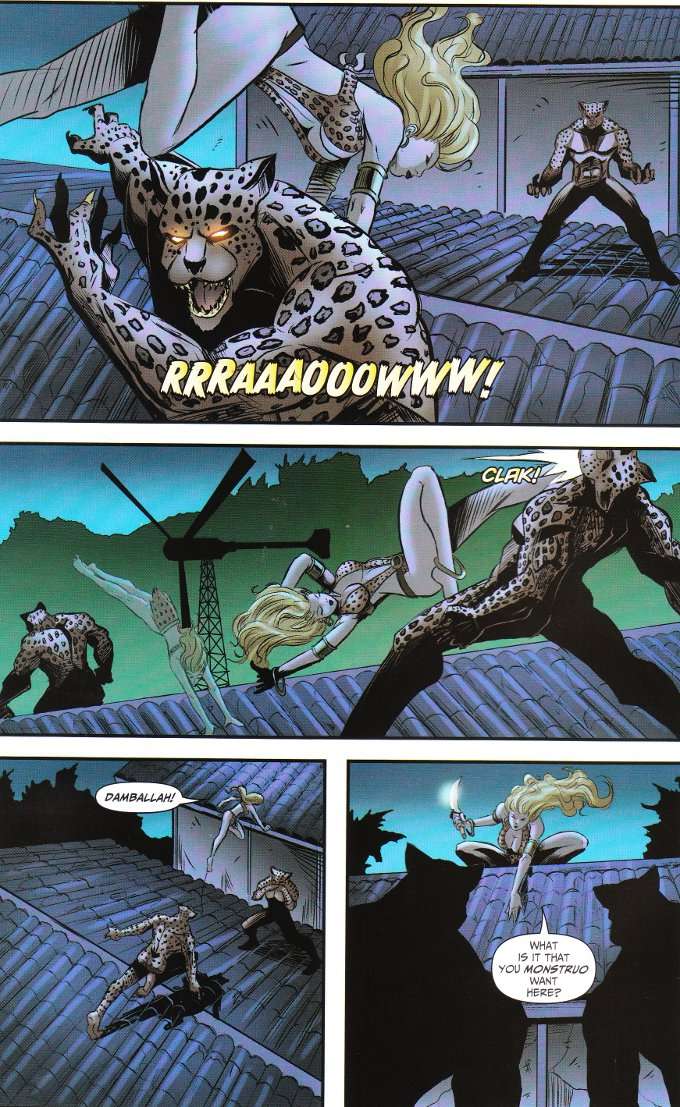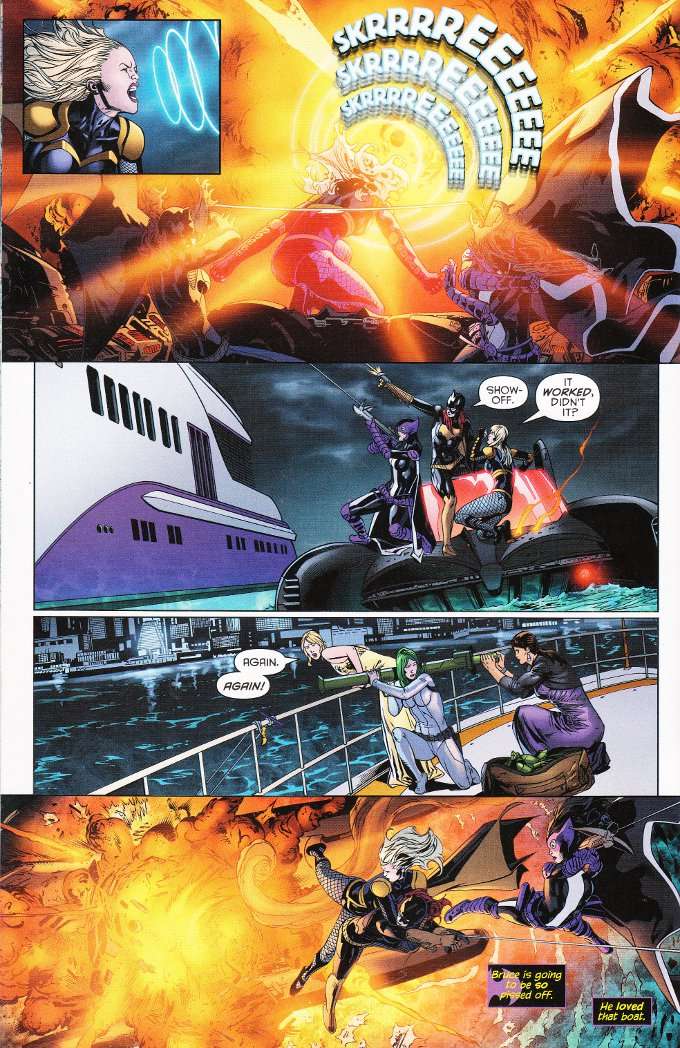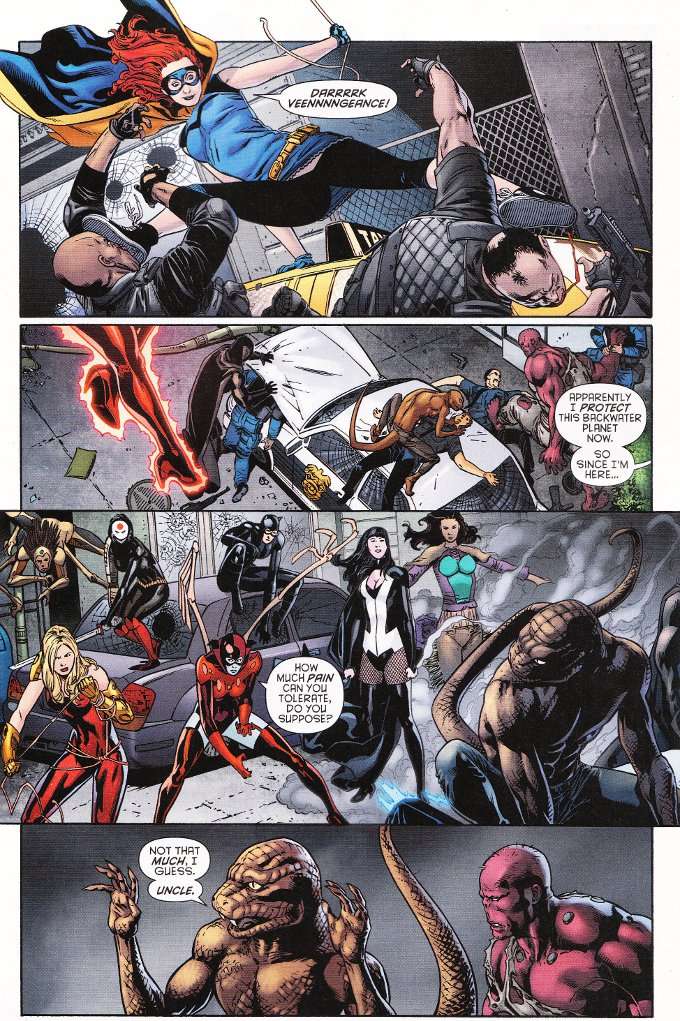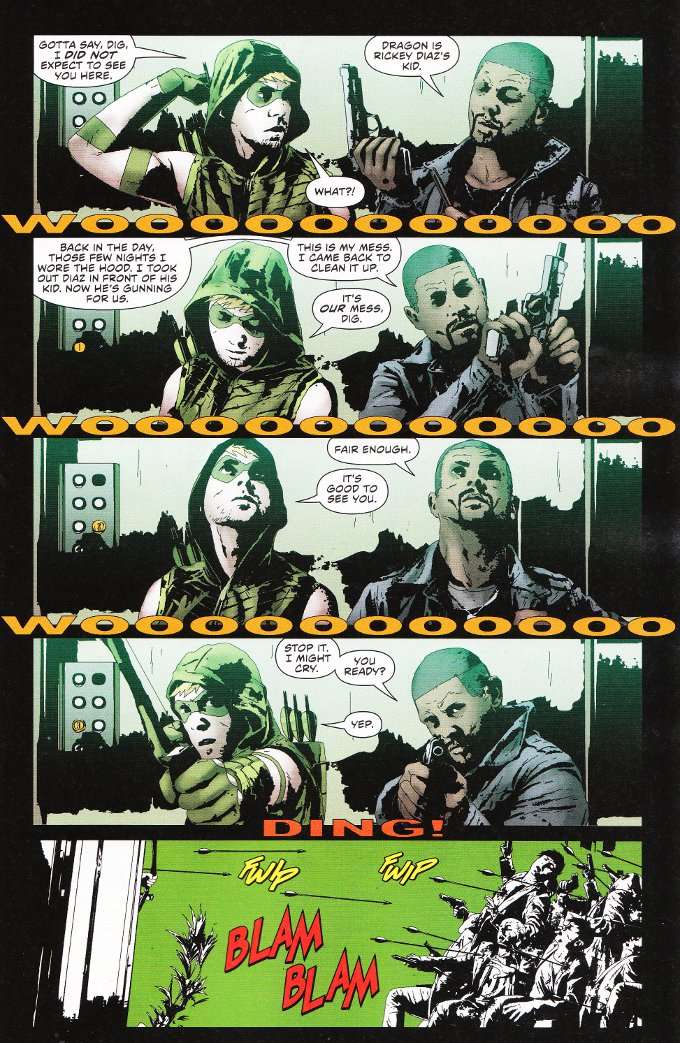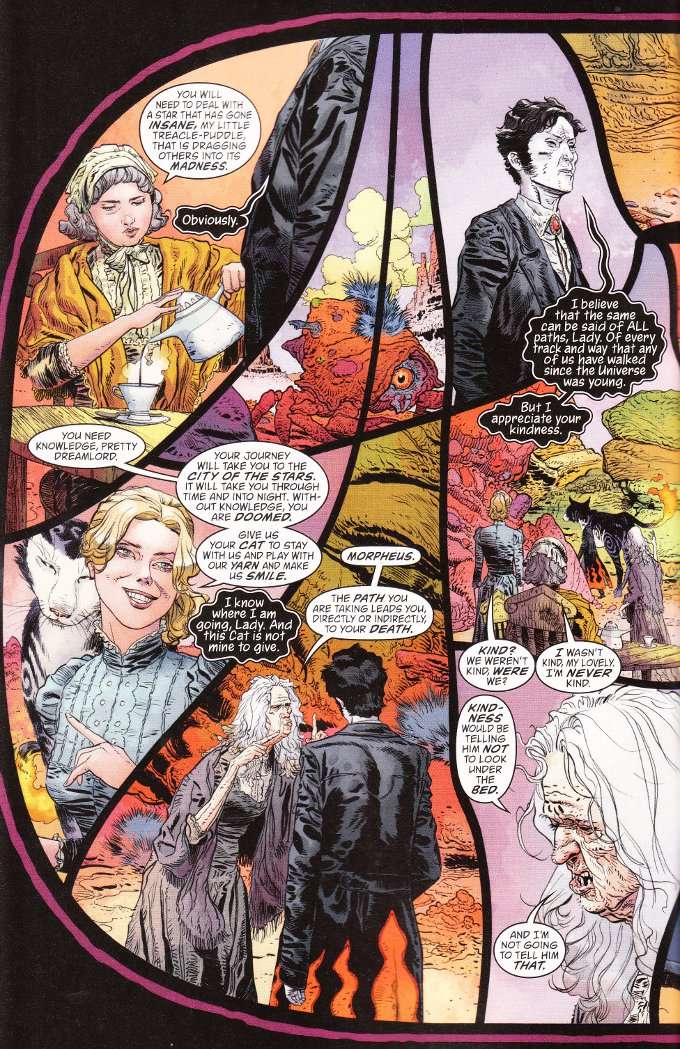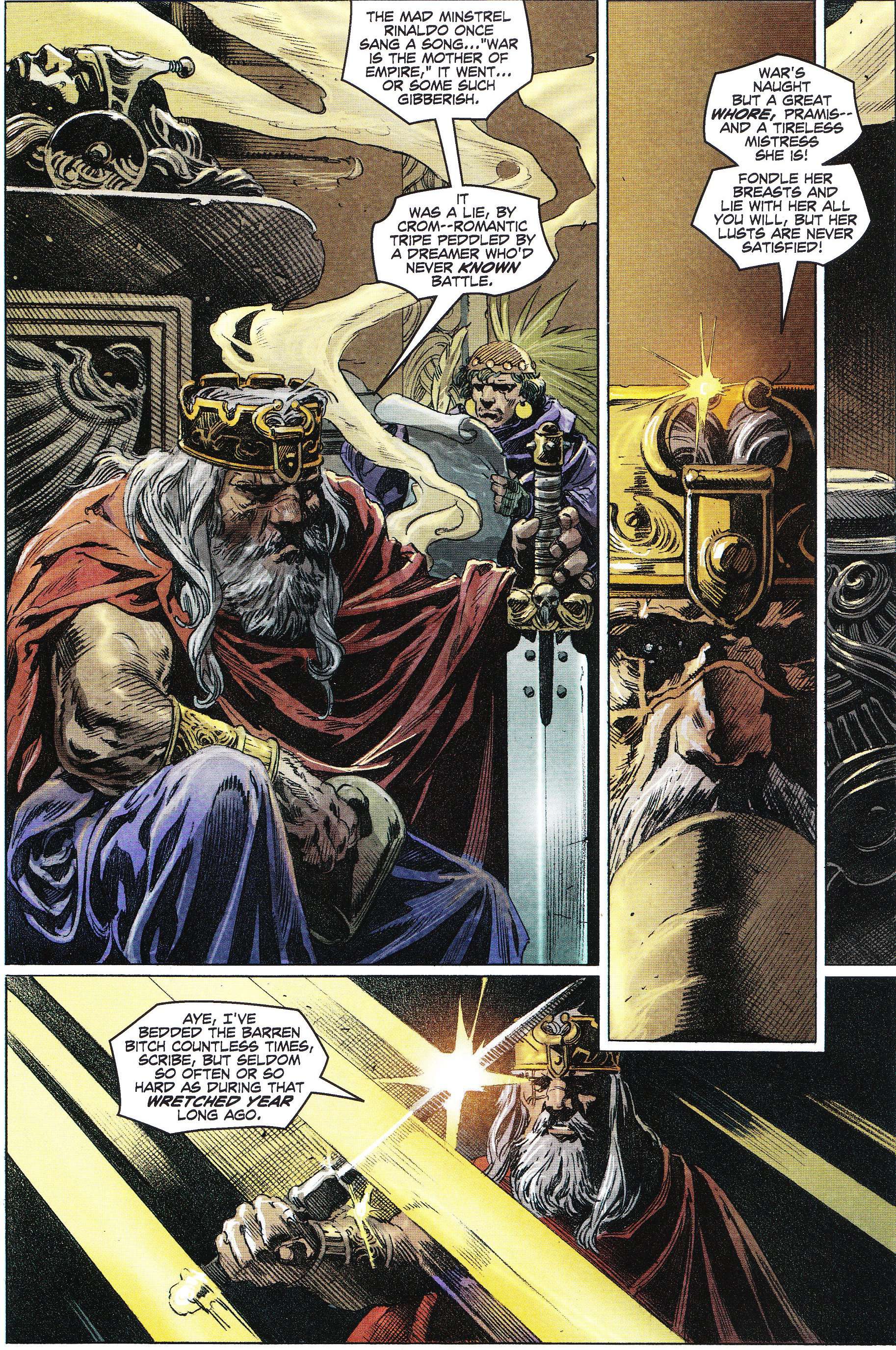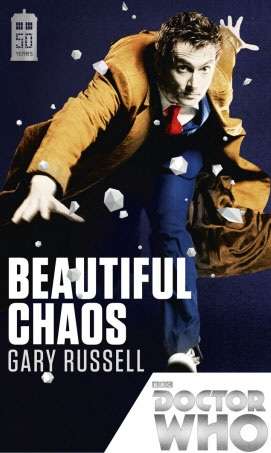I haven't written a lot of reviews of
Injustice: Gods Among Us - Year Two despite it being one of my favorite series right now. I feared I was growing repetitive in describing my love of Tom Taylor's writing and how well he has developed the base concept of a rather simple video game into a complex tale that has given some of my favorite characters the best portrayals they've had in years. To that end, I've decided to showcase my ten favorite moments from the series so far, in the hopes that this will explain what I feel unable to articulate in an original manner.
1. Ollie And Dinah Forever.
 As Seen In: Injustice - Year Two #1
As Seen In: Injustice - Year Two #1
It's no secret to most of my regular readers that I'm a big fan of Green Arrow and Black Canary. Yet few writers in recent years have managed to write them effectively as a couple on those rare occasions they've been portrayed as a couple. At best, they're written as sitcom fodder with Ollie as the bumbling dad and Dinah as the long-suffering mom. At worst, they're outright hostile to one another and seem to survive purely on fantastic make-up sex. Taylor is one of the few who writes them as a real couple who truly love each other. And nothing better showcased that than the first scene of the first issue - a flashback in which we see Dinah defending her man's honor against the bikers who were flirting with her, much to Ollie's amusement.
2. "You want me to say something?"
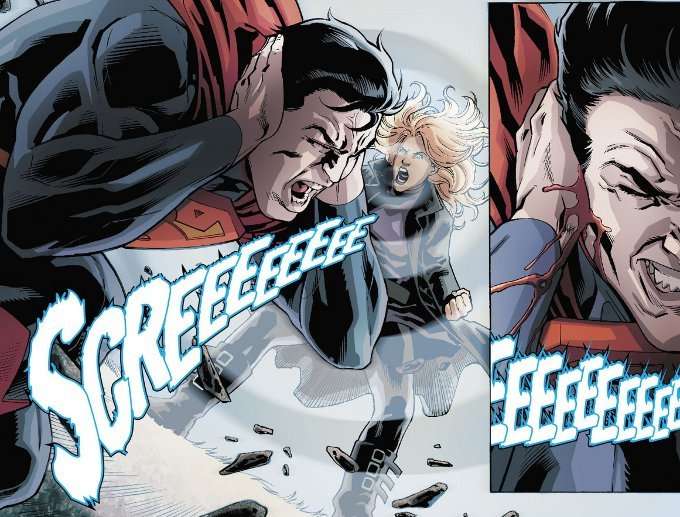 As Seen In: Injustice - Year Two #1
As Seen In: Injustice - Year Two #1
In the
Injustice game, it is revealed that Green Arrow was the first hero to die in the rebellion against the tyrant Superman. Taylor revealed the exact specifics during
Injustice: Year One and began exploring a question that the game left unanswered - how did that world's version of Black Canary react to the death of her lover at the hands of Superman?
Not well, to put it mildly.
With that one sentence, after Superman approaches her following Oliver Queen's funeral, Dinah Lance makes it clear that no quarter will be asked or given in the coming conflict. And we learn just how powerful Black Canary is and how very painful a sonic scream is to a man with super-hearing at point-blank range.
3. Where WERE The Guardians When Krypton Died?
 As Seen In: Injustice - Year Two #5
As Seen In: Injustice - Year Two #5
When word of Superman's actions reaches the planet Oa, Ganthet of the Guardians of the Universe takes it upon himself to travel to Earth to plead with Superman to abandon his current actions. Superman agrees to a meeting but then asks Ganthet to answer one question honestly after Ganthet cites the infinite wisdom of The Guardians as reason enough for Superman to heed his words. It is a question that Ganthet does answer honestly and the answer leads to Superman telling him to get off his planet.
This scene is a powerful one. But more importantly, it shows Taylor's talent for asking questions that have rarely, if ever, been addressed in recent comics... such as why was the destruction of Krypton - a disaster that was the sort of thing The Green Lantern Corps was founded to prevent in the first place - allowed to happen?
4. Barbara Gordon's OTHER Secret Life.
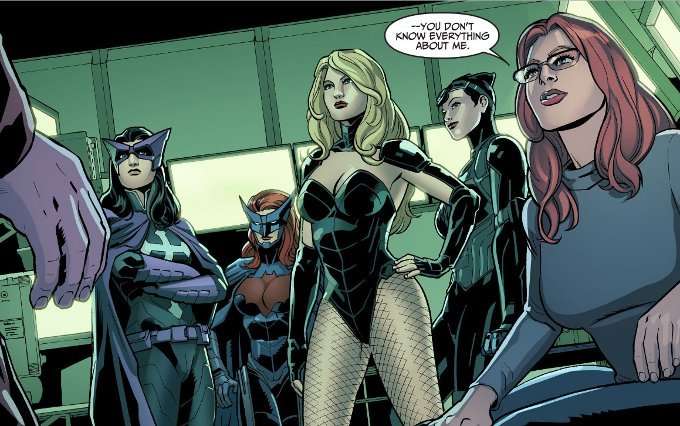 As Seen In: Injustice - Year Two #6
As Seen In: Injustice - Year Two #6
With Gotham City being the first city on Earth to "benefit" from the instillation of one of Superman's armies and the GCPD now redundant, Jim Gordon turns to his daughter for answers. He reveals that he knew about her secret life as Batgirl and guesses that she must have some way of getting a hold of Batman. Barbara says that she does but then she reveals that while her father figured out a lot, he didn't know everything... as a panel slides aside to reveal The Birds of Prey, who were in the middle of a strategy session when Jim Gordon came into the building.
It's nice to see The Birds as envisioned by Gail Simone back in action and Taylor writes all of the heroines involved quite well. But it's also gratifying to have it confirmed that Jim Gordon knew damn well who the vigilantes in his city were and that his daughter was one of them. Taylor balances the humor of the scene as well as Jim Gordon's righteous anger perfectly.
5. Harvey Bullock - Bad Ass.
 As Seen In: Injustice - Year Two #10
As Seen In: Injustice - Year Two #10
Harvey Bullock is a hard cop in a hard city. He's a slob and a jerk but he's doesn't play games with the law. And even after the GCPD is all but shut down by the presence of Superman's army, he still patrols the streets because his badge and his oath mean something to him. At least, they mean enough for him to put himself between a pair of love-birds breaking Superman's curfew and the Super Soldier ready to go Judge Dredd on them.
Is Bullock's stand futile? Of course. And he knows it. And yet, this scene is the quintessence of the series as a whole - morality versus security. It symbolizes that there is a difference between Law and Order and that Superman's quest for peace has become so absolute that even lawful policemen have no place in The New Order.
6. All The Small Things.
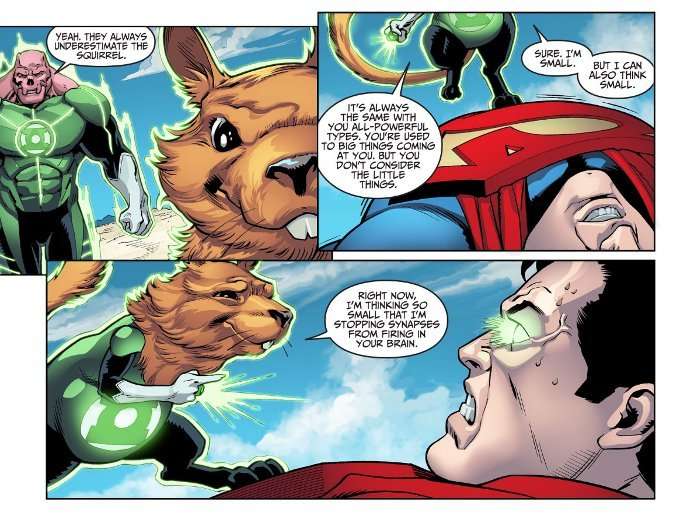 As Seen In: Injustice - Year Two #11
As Seen In: Injustice - Year Two #11
It's always been my contention that any Green Lantern could match Superman - not necessarily through raw power but through sheer creativity. That certainly proves to be the case here as one of the smallest of Green Lanterns - the squirrel-like Ch'p - is able to neutralize Superman's brain through sheer force of will.
7. Girl Talk.
 As Seen In: Injustice - Year Two #13
As Seen In: Injustice - Year Two #13
Another of the interesting questions raised but unanswered by the
Injustice game is how Harley Quinn goes from being The Joker's henchwench to one of the most trusted leaders of the resistance against Superman. Taylor started Harley on the path to redemption in
Injustice - Year One with an unlikely good deed by Green Arrow turning Harley's heart. This issue - which starts off with a fight between Harley and Black Canary - turns hilarious and then touching as a pregnant Black Canary begs for a time-out from the fight to deal with a sudden bout of morning sickness and Harley begins to wax nostalgic about her own pregnancy. If you are a fan of Harley Quinn, you owe it to yourself to read this issue if you don't read any other issues of
Injustice.
8. Harley IS Practical, In Her Own Way...
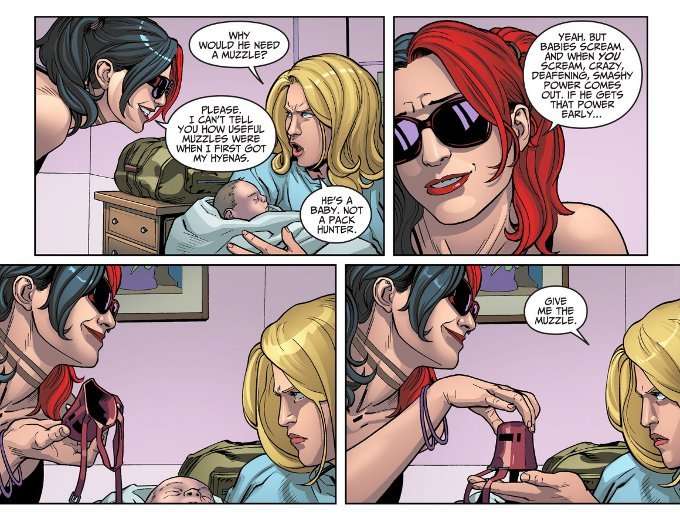
As Seen In: Injustice - Year Two #15
Okay - maybe there's ONE more issue Harley fans upset with her current direction in The New 52 should pick up, if only for the scene where Harley sneaks into the hospital where Black Canary is giving birth to deliver a care package of gifts for the baby... including a baby-size muzzle.
Why? The panels above say it all.
9. The Charge Of The Light Brigade.
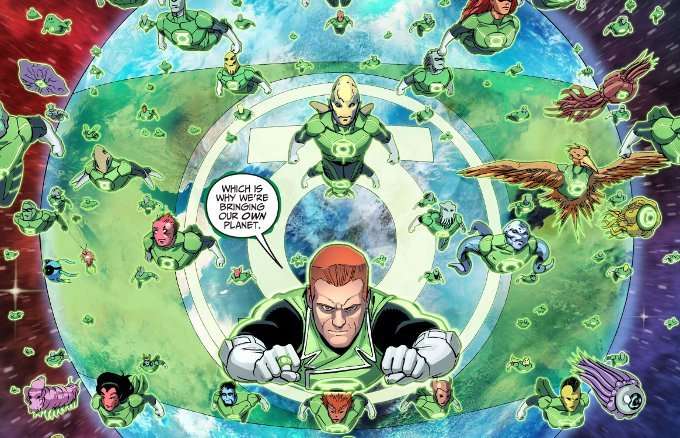 As Seen In: Injustice - Year Two #15
As Seen In: Injustice - Year Two #15
Guy Gardner has always gotten a bad rap as a Green Lantern and I think Taylor has done a great job of showcasing all of the better points of Guy's character throughout this series. Yet while Guy gets a lot of awesome moments and funny moments, nothing quite tops the ending of issue 15, where he calls ahead to tell Black Canary that The Guardians are sending a Brute Squad to take Earth back from Superman and his new found allies in The Sinestero Corps.
Dinah asks if he thinks they can take the planet without blowing it up. Guy admits that he isn't sure, which is why they are bringing their own. And then we pull back to see Mogo The Living Planet bringing up the rear of a gigantic crowd of Green Lanterns!
10. Jim Gordon - Earth's Greatest Hero
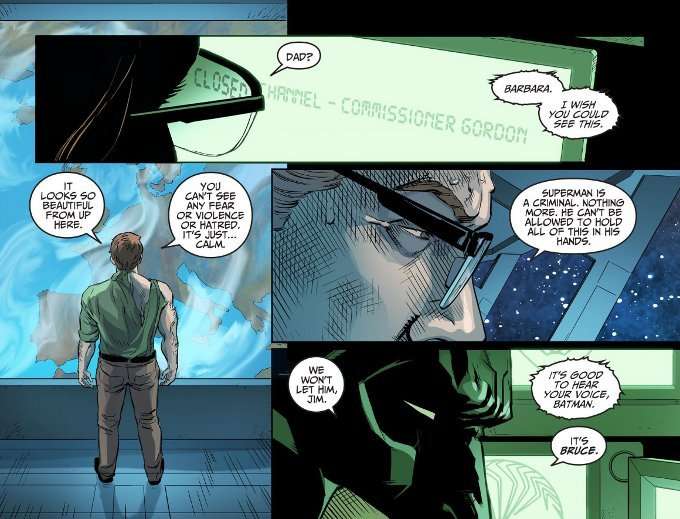 As Seen In: Injustice - Year Two #20
As Seen In: Injustice - Year Two #20
Watching Jim Gordon go from honest cop to freedom fighter over the course of the series is one of the more satisfying subplots of the book. His fight with Cyborg in this issue - another symbolic battle between Man versus Machine that repeats one of the common reoccurring themes in the series - is one of the best so far. But nothing quite matches the end in which Jim Gordon - a common man pushed to uncommon ends - looks down on the world he is trying to save and bids his daughter and spiritual son Batman farewell.
Think I missed a moment? Have a favorite I left out? Let me know in the comments.
